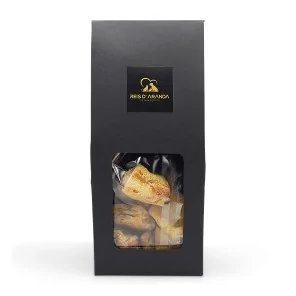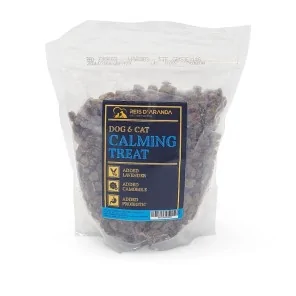Its name says it all: the Vienna blue rabbit comes from Austria. Not only is it beautiful with its shiny blue-grey...
THE AUSTRIAN PINSCHER
INTRODUCTION
The Austrian Pinscher (Österreichischer Pinscher) is a breed of dog of the medium sized pinscher type originating in Austria, where dogs of this type were originally farm dogs, which kept stables free of rats and acted as domestic guards, livestock guardians and shepherds.
THE ORIGIN OF THE AUSTRIAN PINSCHER
The Austrian Shorthaired Pinscher was first recognised as a breed in 1928, but the breed developed from an older type of Pinscher found on farms in the Austrian countryside, a mixture of German Pinschers and local dogs.
In the late 19th century, farm dogs began to die out as the work they did was no longer needed.4 In the early 20th century, Emil Hauck, searching for an aboriginal type of dog identified in 1843 by H. von Meyer as Canis palustris or swamp dog (a type of dog, not an actual species), found what he believed to be some examples of similar dogs in the Austrian countryside. In 1921 he began serious breeding to revive and define the breed type, to separate them from other pinschers indigenous to the area. The Austrian Kennel Club (Österreicher Kynologenverband) first recognised the breed as Österreichischer Kurzhaarpinscher (translated into English as Austrian Shorthaired Pinscher) in 1928. The name was given to the breed to identify its place of origin as Austria (Österreich), and to differentiate it from the Schnauzer which at that time was called the rough-haired pinscher (rauhaariger Pinscher). However, after World War II, the breed almost disappeared. In the 1970s, only one registered dog of the breed remained, named Diokles of Angern. Crossing this dog with other dogs identified as being of the old pinscher type in the area (‘Landpinschern’) has brought the breed back, although there are still only a small number of them.
Ark Austria (Arche Austria), an association for the preservation of endangered native breeds, lists the Austrian Pinscher and states that it is very vulnerable, with only 6 to 12 breeding animals, which are carefully bred to preserve the health and type of the breed.
The breed is recognised in its country of origin by the Österreischer Kynologenverband (ÖKV, Austrian Kennel Club) and internationally by the Fédération Cynologique Internationale in the Pinscher section of Group 2. It is also recognised by the United Kennel Club of the United States as an Austrian Pinscher as of 2006, in the Terrier Group, for its record as a rat hunter.3 In addition, it is recognised by several smaller kennel clubs and internet-based dog registration companies under a variety of translations of the name, which can rewrite the standard to suit dog producers for the rare breed pet market. Purchasers of puppies and group dogs outside the Austrian breed restoration programme should read the original standard (which can be obtained in translation from the FCI) and the pedigree of their dog to ensure that they are buying an Austrian Pinscher and not an overly inbred or randomly bred dog.
THE AUSTRIAN PINSCHER STANDARD
GENERAL APPEARANCE: A medium sized dog with a lively and alert expression on his face.
PROPORTIONS:
HEIGHT AT WITHERS: LENGTH OF BODY = 9:10
LENGTH OF MUZZLE : LENGTH OF SKULL = 4:6
HEAD : Pear-shaped in harmony with the body.
CRANIAL REGION : Broad and domed with clearly marked frontal furrow and depression.
SKULL: Well marked zygomatic arch and strong masticatory muscles.
STOP: Marked.
FACIAL REGION:
TRUFFLE: Black.
HOCIO: Strong, nasal bridge straight.
BELPHOS: Firm, firm, adherent and darkly pigmented.
TEETH / TEETH: Strong, complete scissor bite.
EYES: Large eyeball in a rounded palpebral fissure, close fitting eyelids, dark pigmentation.
EARS: Small, high set, button ears.
NECK: Medium length, strong.
BODY :
CROSS : Well marked.
BACK: Short, broad, straight and firm.
LOIN: Short and broad.
Croup: Long and broad.
CHEST: Deep, long, broad, barrel shaped. Good forechest. Chest muscles strong and taut.
BELLY: Slightly tucked up.
TAIL: Strong, medium length, well covered with dense hair.
LIMBS: Strong bone structure.
FOREQUARTERS : Well muscled, straight limbs, broad front.
SHOULDER: Shoulder blade long with sloping position.
ARM: In sloping position.
FOREARM: Straight, of medium length.
Carpus (Pastern): Strong carpal joint.
Pastern: Short, slightly sloping.
HINDQUARTERS : Well angulated.
Upper thigh: Broad.
LEG: Moderately long.
Hock joint : Strong.
HIP: Short.
FEET: Tight fitting with strong nails.
GAIT / MOVEMENT : Covering the surface, fluid and harmonious.
SKIN:Tight fitting.
HAIR: Dense double coat (Stockhaar). The outer coat is short to medium long, dense, straight and tight. The undercoat dense and short. Slight breeches on legs.
COLOUR: Wheaten yellow, brownish yellow, fawn red, black with tan markings. White markings: on chest, muzzle, throat, neck, nape of neck, limbs and tip of tail. The absence of white markings is not to be considered a fault.
SIZE :
HEIGHT AT WITHERS
- MALES: 44 - 50 cm.
- FEMALES: 42 - 48 cm.
FAULTS: Any departure from the foregoing points should be considered a fault and the seriousness with which the fault should be regarded should be in exact proportion to its degree and its effect upon the health and welfare of the dog.
DISQUALIFYING FAULTS:
- Aggressiveness, Shyness.
- Prognathism, Enognathism.
Any dog showing clear signs of physical or behavioural abnormalities should be disqualified.
NOTE: Male animals should have two apparently normal testicles fully descended into the scrotum.
HEALTH OF THE AUSTRIAN PINSCHER
No data has been collected on the health of the breed, but good health is a stated aim of breed restoration in Austria.
THE PERSONALITY OF THE AUSTRIAN PINSCHER
Austrian Pinschers are very friendly and loyal to members of their family group. They tend to behave very affectionately towards those with whom they share their lives. Children are no exception, so they will make good companions for children of all ages. However, remember that play should always be controlled by an adult.
These dogs have an attentive personality and are always aware of what is going on. They tend to be wary of people they do not know and are slow to develop trust with visitors and family friends.
They are excellent watchdogs, especially because of their even temperament. They are not aggressive, even with an intruder, whom they will merely control while alerting to their presence.
Their heritage as rambunctious dogs makes them a poor choice for homes with small animals such as cats or rabbits, whom they will see as prey. With other conspecifics they may be territorial, especially if they are of the same sex. Proper socialisation will help to mitigate this trait.
They are generally very intelligent and quick learners, although they have an innate tendency to question authority. Because of their dominant personality, it is not uncommon for them to try to take charge of the situation. They require a firm and confident trainer who will control them without being too harsh.
CONCLUSION
It is not recommended that an Austrian Pinscher live in a house without a garden or in a city flat, as they are a breed used to moving freely in large spaces. They tend to bark excessively, a habit you should moderate from the time they are small. However, barking is a fundamental part of their behaviour, making them unsuitable for flat living.
Leave a comment
Log in to post comments
















